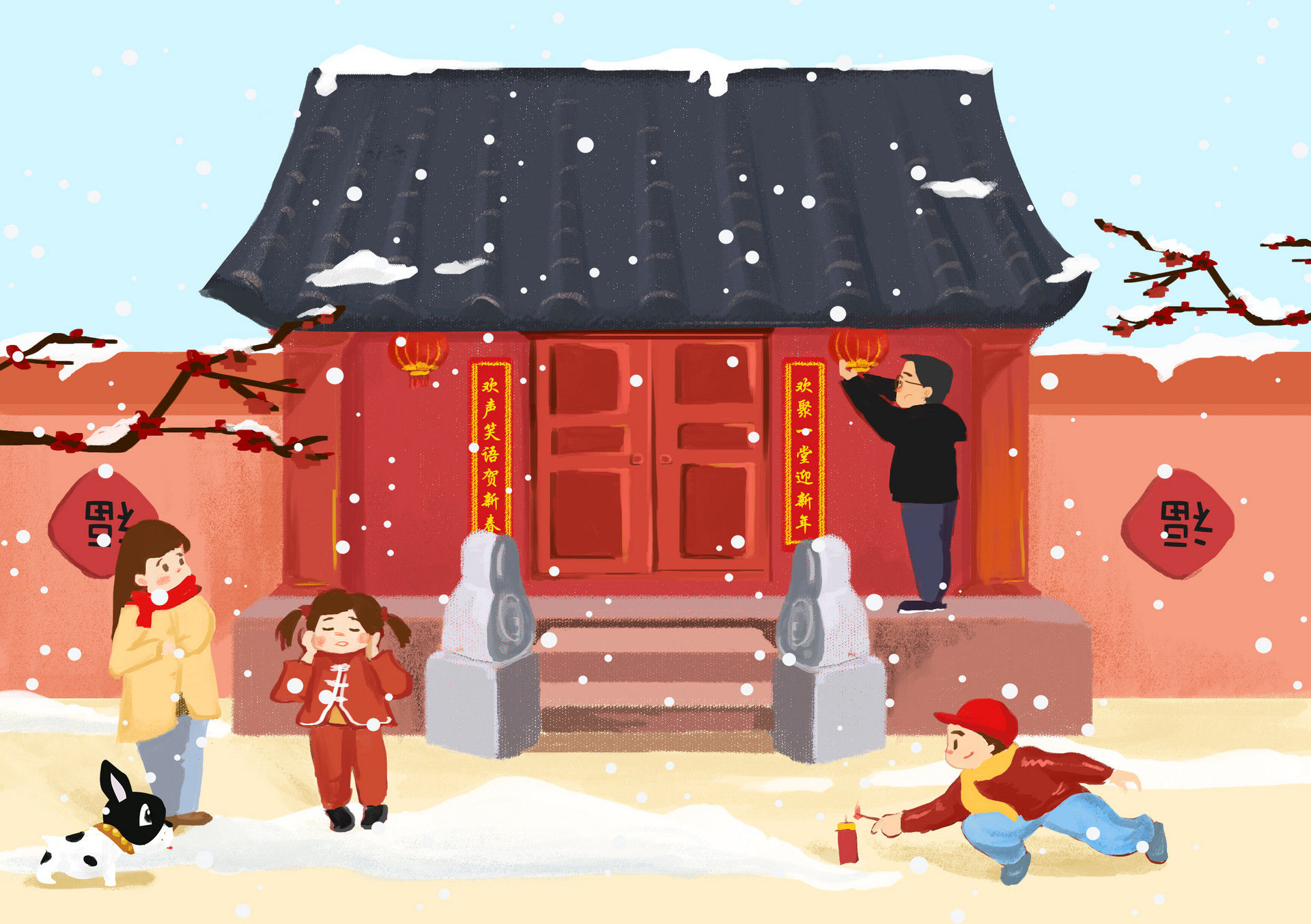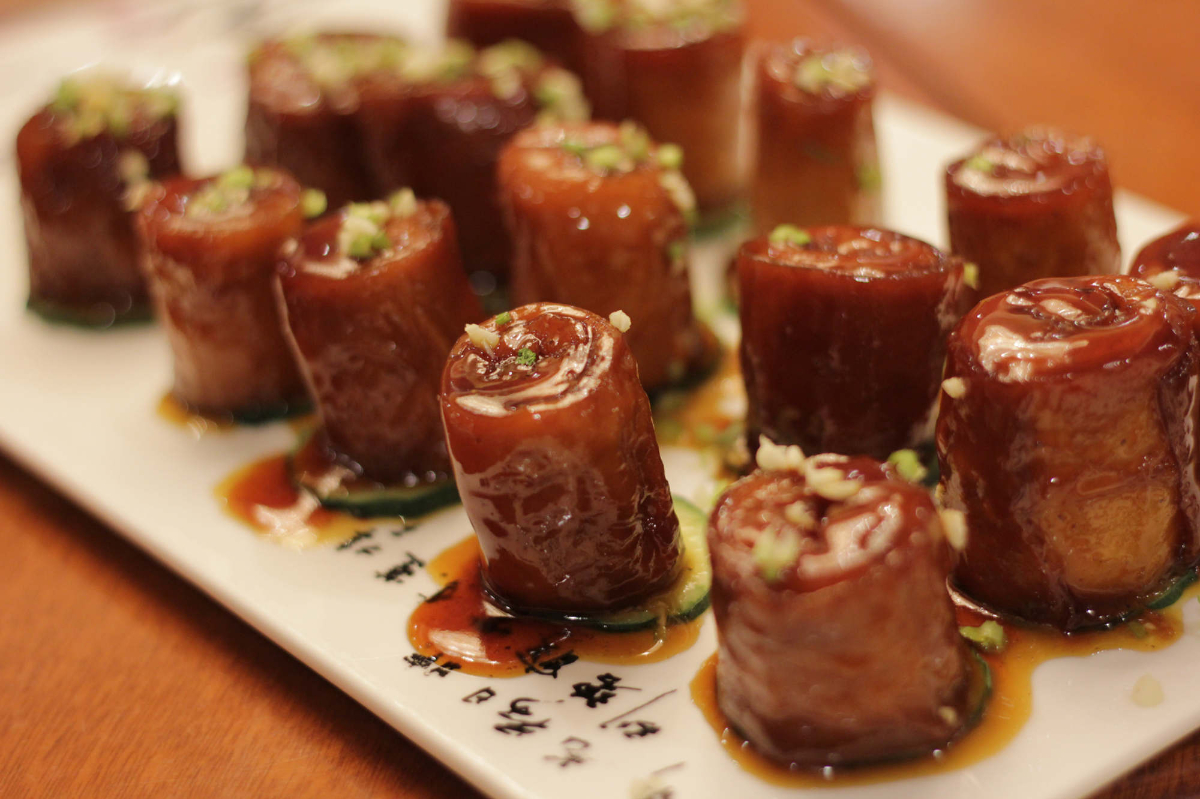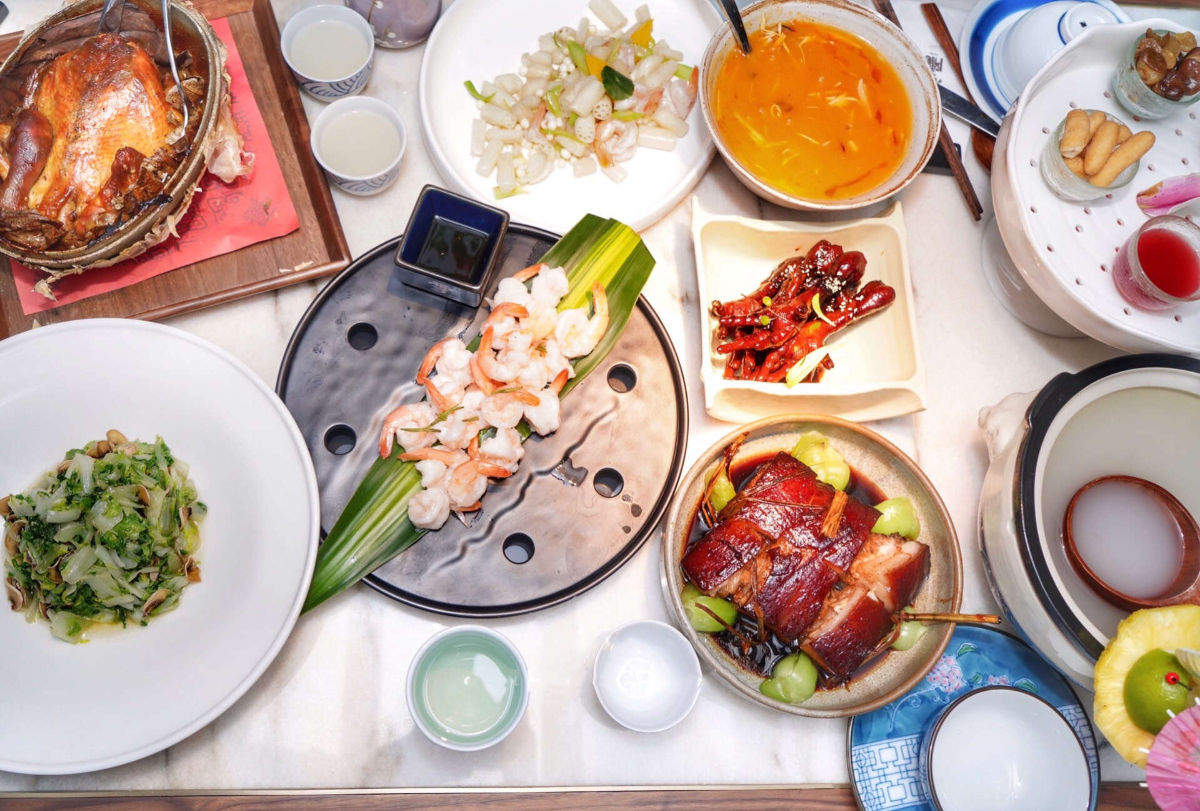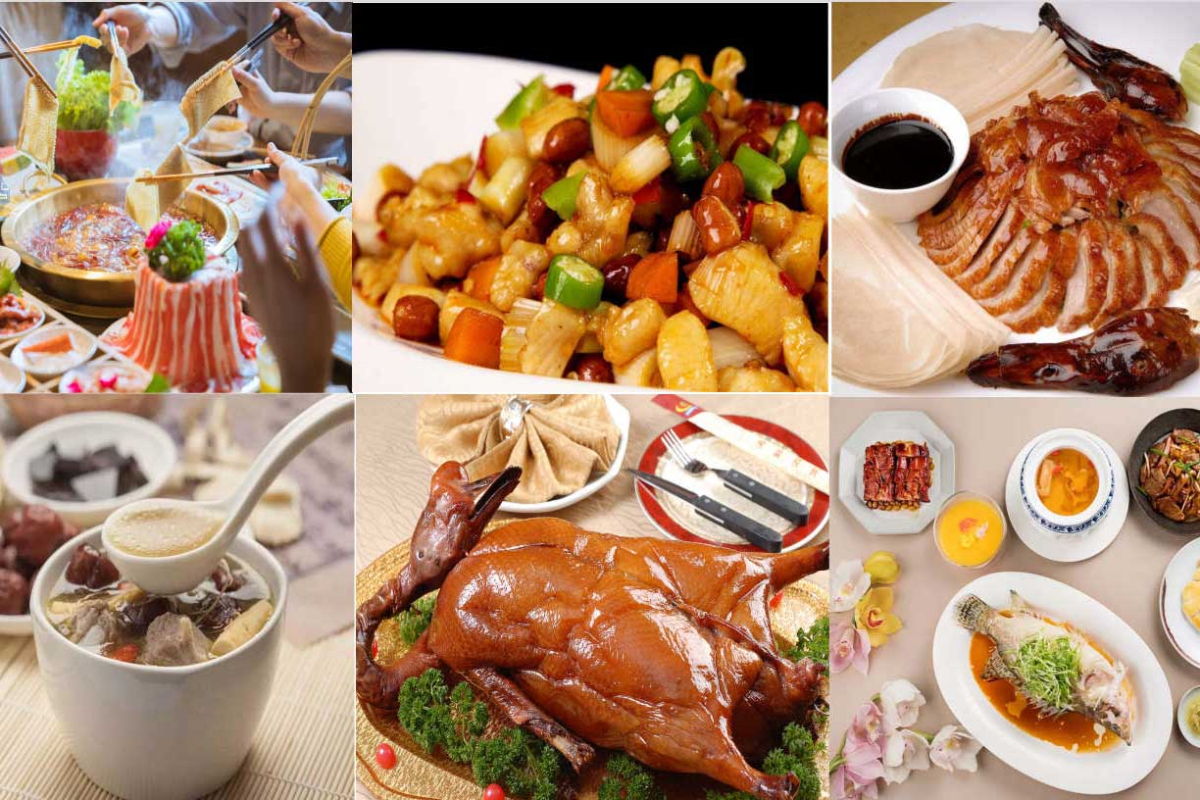The traditional Chinese Spring Festival

Chinese New Year is the Chinese festival that celebrates the beginning of a new year on the traditional Chinese calendar or lunar calendar. The festival is commonly referred to as the Spring Festival in China as the spring season in the lunisolar calendar traditionally starts with lichun, the first of the twenty-four solar terms which the festival celebrates around the time of. Marking the end of winter and the beginning of the spring season, observances traditionally take place from New Year’s Eve, the evening preceding the first day of the year to the Lantern Festival, held on the 15th day of the year.
● History of the Chinese New Year
The Spring Festival evolved from the annual worship ceremony in ancient times during which people honored the deities and ancestors, and prayed for good harvests in the coming new year.
The date and appellation varied widely throughout the history of different feudal dynasties. It was not till after the Revolution of 1911, which overthrew China’s last imperial dynasty and established a republic, that the current date and reference we use today was designated.
In many households, Chinese New Year’s celebrations begin on the 23rd of the 12th lunar month when people worship the Kitchen God. The 15th day of the first lunar month marks the end of the entire holiday. During that day, people eat sweet stuffed glutinous rice balls boiled in water, watch lantern shows and guess lantern riddles. The eve and first day of the Chinese New Year’s celebrations are the most important. For thousands of years, the Spring Festival has been celebrated by Chinese people of different ethnic groups.
● Legends about the Spring Festival
There are many interesting tales and legends about the traditions of the Spring Festival, among which the following two are the most popular.
The mythical Nian beast:
In ancient times, there was a savage beast called Nian (in Chinese “nian” has the meaning of “year”). Every year on the 30th day of the 12th lunar month it would come out and attack livestock and villagers. Then one year as Nian was approaching a village, it came across two shepherd boys who were competing their ability of using whips. Upon hearing the loud crack sound, the beast was so frightened that it fled at top speed to another village, only to bump into red clothes hanging outside a house. Terrified again Nian continued to run on past the village. It soon arrived at another village. But when it saw a house illuminated with light inside, it run away once again. As a result, people concluded that the beast was afraid of loud noise, the color red and glaring lights. Every year afterwards, when the New Year was about to come, people would set off firecrackers, beat drums and gongs, hang red lanterns, put up red paper on the windows and doors, and wear red clothes, all of which later evolved into traditions of Spring Festival.
Customs of Spring Festival
Chinese New Year is associated with several myths and customs. The festival was traditionally a time to honour deities as well as ancestors.Within China, regional customs and traditions concerning the celebration of the New Year vary widely.
01. Paste couplets
Paste couplets is a kind of literature. Chinese people like to write some dual and concise words on red paper to express their new year’s wishes. On the arrival of New Year, every family will paste couplets.
The custom of pasting couplets on the doors has a long history. In the ancient times, people hung short branches of peach tree on the doors or at the front gates for the purpose of driving away the evil things. Later they became peach wood boards with some Chinese characters written on them. With the invention of paper, on each of which was written a verse line to welcome the New Year to express wishes for happiness and good fortune. During the long time development, spring couplets have become a special form of literature with their own characteristic.The couplets are mainly short poems written in classical Chinese, which express good wishes for the family in the coming New Year.
02. Fireworks
Bamboo stems filled with gunpowder that was burnt to create small explosions were once used in ancient China to drive away evil spirits. In modern times, this method has eventually evolved into the use of firecrackers during the festive season. Firecrackers are usually strung on a long fused string so it can be hung down. Each firecracker is rolled up in red papers, as red is auspicious, with gunpowder in its core. Once ignited, the firecracker lets out a loud popping noise and, as they are usually strung together by the hundreds, the firecrackers are known for their deafening explosions that are thought to scare away evil spirits. The burning of firecrackers also signifies a joyful time of year and has become an integral aspect of Chinese New Year celebrations. (Since the 2000s, firecrackers have been banned in various countries and towns.)
03. Hand out red packets
Elders will put some money into red packets, and then hand out to the younger generation during spring festival.
They are used to put money in and the money is called "ya sui qian", symbolizing the warding off, or suppression of evil. Usually, adults or older people give red envelopes with any amount of money to the juniors. On the cover of the red envelopes, there are usually icons of what the year belongs to or some common greetings like "xin nian kuai le" (Happy New Year) "ji xiang ru yi" (wish everything goes well for you).
04. Family reunion dinner
People travelling or residing in a place far away from home will back to their home to get together with their families.
On Chinese New Year's Eve, members of the family, big or small, near or far away, gather for a "reunion dinner". The most common dishes for this dinner are chicken and fish. There are many symbolic foods prepared for the New Year. For example, the fish, "yu" in Chinese pinyin, signifies that there should always be surpluses. Commonly in northern China, "Jiaozi" (dumplings) are made, symbolizing the luck that is wrapped inside. In eastern China, "Nian gao" (Chinese New Year Pudding) is prepared, symbolizing a more prosperous year. People also buy melon seeds, candy, and other seeds.
05. Stay up late on New Year’s Eve
it’s a kind of way for Chinese people to welcome New Year’s arrival. Staying up late on New Year’s Eve is endowed with auspicious meaning by people. The old do it for cherishing their past time, the young do it for their parents’ longevity.
The custom of staying up all night on New Year’s Eve dates back to the Northern and Southern Dynasties (420-289). Legend has it that, long ago, there was an ugly and furious monster called “Nian” that would come down from the mountains to hunt people on New Year’s Eve. So people got together on this day, staying up and chatting, hoping for peaceful passage of the time. The custom symbolizes the warding off of all diseases and disasters, wishing for good luck in the New Year.
06. Dragon dance and lion dance
Dragon dance and lion Dance are traditional Chinese folk activities which are very popular around China during the Spring Festival. In China, people believe that Dragon is a symbol of fortune, nobility, bravery and especially power, and lion represents auspiciousness. All across the county, you’ll see dragon and lion dances everywhere – lending a cheery, festive atmosphere to the occasion.From the 1st day of New Year to the 15th day, streets and homes are filled with dragon and lion dances. They are formed by a group of people, some of whom manage the "dragon" and the "lion", while some beat the drums.It is believed that the loud beats of the drum and the deafening sounds of the cymbals together with the face of the Dragon or lion dancing aggressively can evict bad or evil spirits.
● What to do during Spring Festival
First Day of the New Year
During the first day of the first lunar month, most people begin the act of visiting and greeting families and friends in their homes to offer good wishes; this is called Bai Nian. Traditionally, younger people visit older relatives and friends, while married couples tend to visit the husband's family. This activity promotes ripe opportunities to pass out the money-filled red envelopes, called Hong Bao. Not only red envelopes are traded though; people like to pass out food, wine, and other assorted gifts.
The Following Days
During the following days, celebrations continue. Lion dances and performing troupes are commonly seen in public places in some part of China. Other possible sights include operas and dragon dances, which are similar to lion dances but with distinct dragon costumes instead. Unlike the first day, married couples often visit the wife's family the second day.
Bai Nian continues. In Chinese culture, close relatives and the elderly are typically afforded more respect, and as such are visited on the first day of the new year. More distant family members and friends are greeted from then on up until the fifteenth day, which is the official end of the holiday.
Fifteenth Day
The fifteenth day is when the Yuan Xiao festival, also called the Lantern festival, takes place. The day also coincides with the first full moon of the new lunar year. During the night, congregations of flying, lit, paper lanterns are commonly seen in public places at lantern fairs, which are usually held at temples. Traditionally, riddles can be written on lanterns for passersby to decipher out of amusement. Yuan Xiao (alternatively known as tangyuan) is also the name of a food eaten on this day, which is a rice ball with assorted fillings inside such as fruit preserves, sweet sesame, red beans, or peanuts. The fifteen day marks the conclusion of the New Year celebrations.









